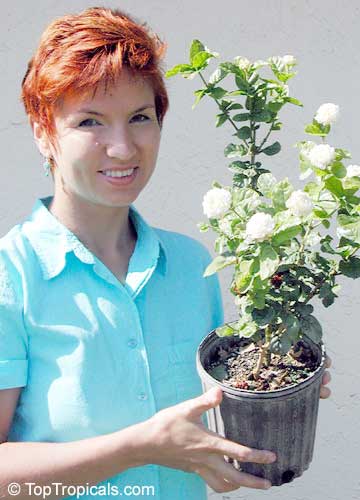Top Tropicals Plants
TopTropicals plants: Better, Bigger, Bloomer!
TopTropicals plants
Plant size - general info and Plant Size Page (in details)
Things To Look For Before Taking the Plunge
All our plants are guaranteed to be healthy at the shipping. Shipping terms and guarantees
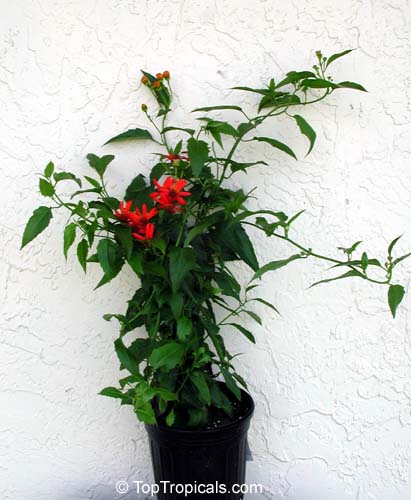
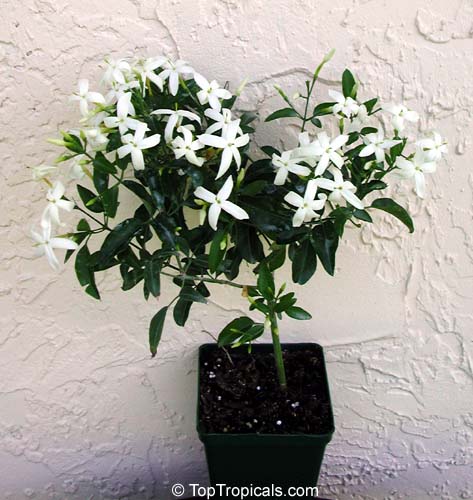
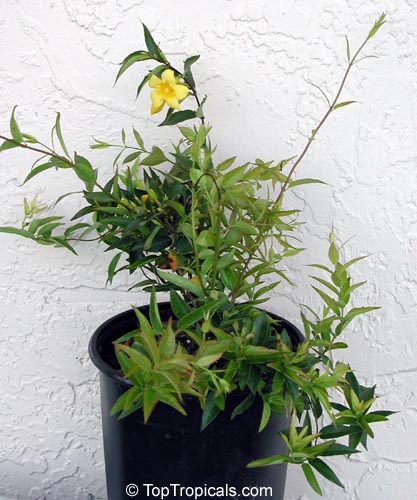
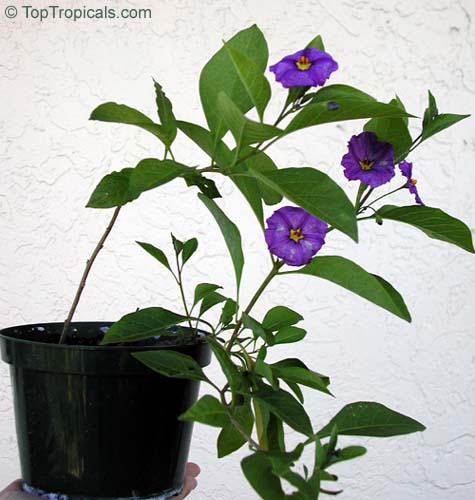
There is a great number of mail-order companies selling tropicals plants. Some of them have made a name and a good reputation, offering an extended choice of exotic varieties.
Some plants that we have in our collection we originallly bought from different online stores. Most of the time we were satisfied with what we got, other times...
Sometimes plants grown in greenhouses are harder to keep healthy: they are grown in controlled temperature/humidity, which makes them too delicate and weak. How many times you have bought a perfect looking mini-rose in local WalMart as a present? In a couple weeks it looks leggy, losing leaves or simply dying. Have you ever wondered why? Because, in greenhouses these plants were grown under precise controlled conditions, light, humidity. They were sprayed by liquid fertilizers, growing-hormones (they're similar to anabolics people use to grow their biceps. Becips are great, but what about side effects?). As a result, these plants are weak. They have weak undeveloped root system. They don't need developed root system living in a greenhouse. Your home is completely different. Humidity is low, light is low or high, you water them once a day instead well-regulated misting..... If a plant could talk it would cry like a baby.
We aree in Florida and we are able to provide our plants with lots of sunlight and high temperatures year round. We grow our plants in natural conditions where they can get tropical sun and soft rain water 12 months a year. That's why they look and stay healthy, they adjust easier to different conditions and maintain disease/bugs resistance. It's like their immune system is hardy enough to survive any stress.
Plant size
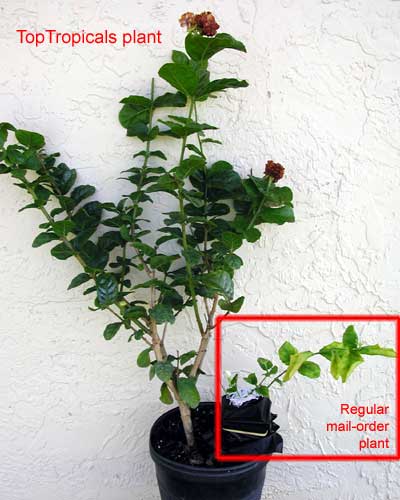
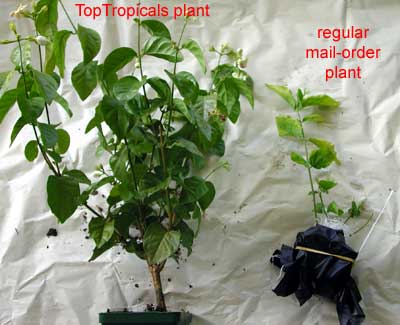
We provide our customers with large and mature plants, that usually are much bigger than those that you might get at some leading mail-order companies for the same price (or even more expensive). To read more about plants size, please visit Plant Size Page.
2 plants in 1 pot
Sometimes you can see two plants, ORIGINALLY planted in the same pot: two stems, but they are growing in the same pot and two rootballs are tight together, although they could be separated easily.
If you decide to separate them - just take a sharp knife and cut the rootball in two halves between the two stems. It's OK with the plant with a proper care, it will recover and sprout new root growth on the cut side in a week or so.
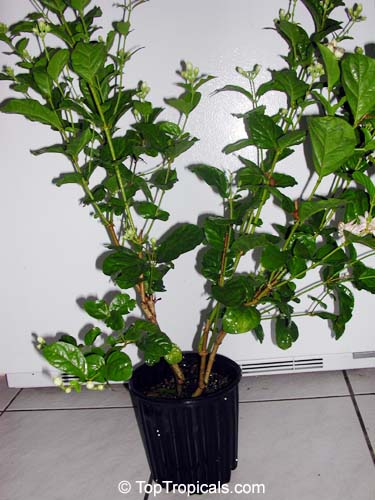
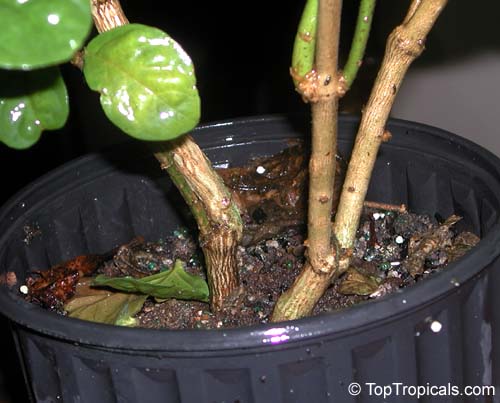
Frequently Asked Questions About Buying Tropical Plants Online.
How To Tell a Good Company from a Bad One
Get expert answers on plant size, USDA zones, cold protection, and how Top Tropicals ensures quality and customer satisfaction.
Excerpted from "The Plants By Mail FAQ" by Peter Leppik
We provide a USDA zone range and cold hardiness rating for every plant; however, most true tropicals still need protection below Zone 9-10.
Every plant from our store is provided with a latin name. We use scientific name as primary index.
Each listing includes pictograms that summarise sun, water, and other plant needs at a glance.
We reply to all e-mail enquiries and answer phone calls; growers respond personally.
Every mail order catalog that I've seen offers some sort of guarantee. This should NOT be a factor in deciding where to buy from. After all, what good does it do if they replace a plant that died because you can't grow oranges in Alaska? The replacement will just die, too, and you'll spend twice as much time on a plant that was Never Meant To Be. Some people have even noted an inverse relation between the quality of the guarantee and the quality of the plants: the louder the company proclaims its "FOOLPROOF 100% MONEY-BACK GUARANTEE," the worse the plants are when they arrive..."
We guarantee plants arrive healthy or we replace them. We can't guarantee that the plant will grow well. We don't know where you live, how much sun the plant gets every day, your soil and so on. Long-term success depends on climate and care; see our shipping terms and guarantees.
Okay, so you've got your heart set on the beautiful Creeping Green Stuff. Before plunking your money and time on it (usually more time than money), you should stop and ask yourself a few questions:
Will it grow in my area? If they don't make it CLEAR (i.e. by telling you the hardiness zone), then avoid that plant, or buy it from somebody who will tell you..."
True tropicals need warmth; in zones below 9-10 you must provide protection or move them indoors for winter.
Yes, we know spring-summer-fall-winter garden fever simptoms. You see, when you live in South Florida you have fever all year around. And many times, when we buy a beatiful small shrimp plant, we don't think about huge bush in one year. If you live up north, you have no other choice but to keep plants in pots, where they don't grow large and are easily manageable.
We advise you to consider local weather when you expect plants to arrive. We hate to see our plants get killed during transit by the unexpected frost in April or too much heat in August.
All photos are taken in our own gardens or nearby botanical collections; with proper care your plants can look just as good.
